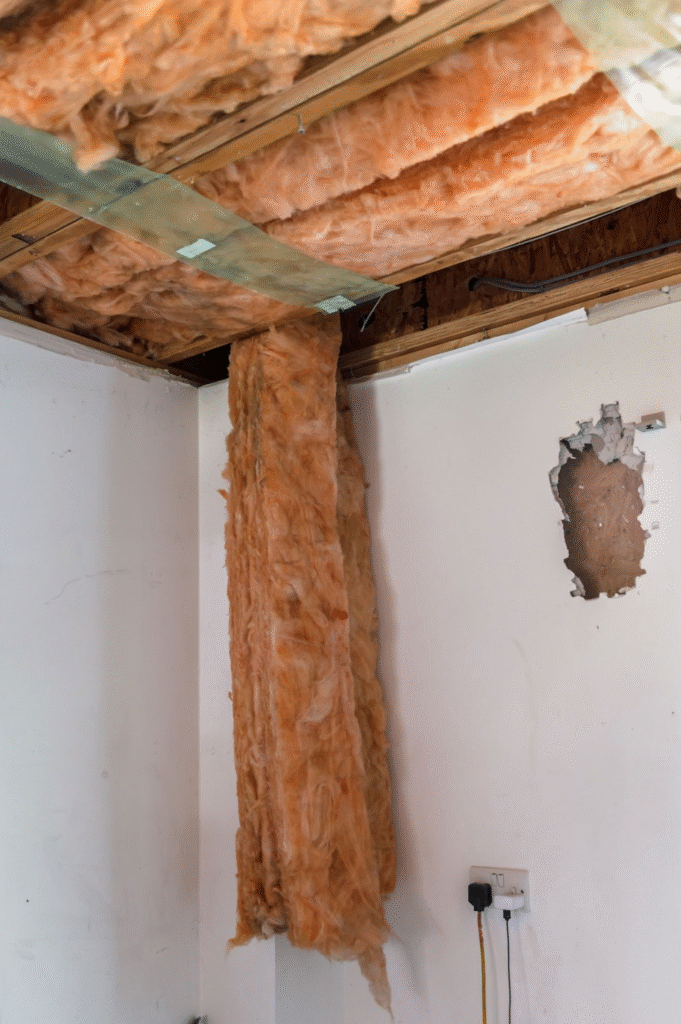
Cool, damp air is a signature of Pacific Northwest living—but that moisture can also invite one of a homeowner’s worst nightmares: dry rot. Caused mainly by the fungus Serpula lacrymans, dry rot attacks wooden framing, feeds on structural cellulose, and spreads silently across joists, sill plates, and sub-floors. Catching it early is the only way to avoid costly structural repairs, so homeowners need to know what to look for—and how to act fast with efficient dry rot treatment that stops the fungus in its tracks.
Why Basements Are a Hotspot in the PNW
- High Groundwater & Rainfall – Western Washington averages 35–90 inches of rain annually, pushing moisture through foundation walls and slab seams.
- Cool Temperatures – Wood stays in the 65–75 °F zone the fungus loves.
- Poor Ventilation – Many basements rely on minimal air exchange, trapping humidity that hovers above 28 % MC (moisture content)—ideal for fungal growth.
Early Warning Signs of Dry Rot
- Musty, Mushroom-Like Odor
A sweet, earthy smell is often the first clue—even before visual changes appear. - Cubical Cracking
Wood shrinks and splits into small, brick-like cubes as the fungus digests cellulose. - Soft Spots or “Spongy” Feel
Press a screwdriver into suspect areas; if it sinks with little resistance, decay is underway. - White or Gray Cottony Mycelium
Spreads across lumber or masonry like a silky web, sometimes forming water droplet “tears.” - Rust-Colored Fruiting Bodies
Pancake-shaped pads release reddish spores—clear proof the colony is mature.
DIY Inspection Checklist
| Location | What to Look For | Tools Needed |
| Rim joists & sill plates | Discoloration, soft wood | Flashlight, awl |
| Underside of sub-floor | Web-like filaments | Mirror, moisture meter |
| Foundation corners | Condensation, spore dust | Hygrometer |
| Around pipes & vents | Leaks, staining | Paper towel blot test |
Stop Dry Rot Before It Starts
- Control Moisture – Dehumidifiers, vapor barriers, and properly sloped landscaping keep humidity below 20 %.
- Fix Leaks Quickly – Even a pinhole in a supply line can raise nearby wood MC enough for spores to germinate.
- Improve Airflow – Install vent fans or passive vents at opposite walls to create cross-ventilation.
- Seal & Treat Wood – Borate preservatives add a layer of defense, especially on new framing during remodels.
When You Spot the Fungus: Act Fast
- Isolate the Area – Seal off HVAC vents to keep spores from circulating throughout the house.
- Dry Out – Run heaters and fans to drop wood MC below 16 %; fungi can’t thrive in dry timber.
- Remove & Replace – All structurally compromised wood must go—there’s no “curing” rotted lumber.
Because dry rot can spread unseen behind walls and even across masonry, the safest course is to call professionals for help. Certified rot-repair teams use moisture mapping tools, HEPA vacuums, and fungicidal treatments to fully eradicate the colony and restore structural strength.
The Cost of Delay
Leaving dry rot unchecked can escalate repair bills from a few hundred dollars for spot treatment to many thousands for beam replacement or full floor-system rebuilds. Worse, insurance rarely covers decay resulting from long-term moisture problems—making early detection your most budget-friendly move.
Key Takeaways
- Basements in the Pacific Northwest offer ideal conditions for dry rot: persistent moisture, cool temps, and limited airflow.
- Regular visual inspections—plus your nose—are the best first-line defense.
- Control humidity, fix leaks, and treat vulnerable wood to keep fungus at bay.
- At the first confirmed sign of decay, engage experts for thorough removal, remediation, and long-term prevention.
Know the warning signs, act quickly, and your basement can stay strong, safe, and rot-free—no matter how damp the weather outside.